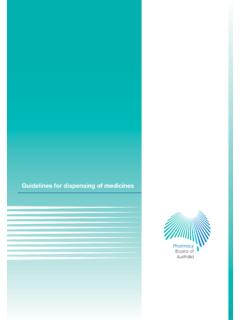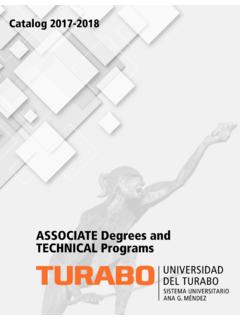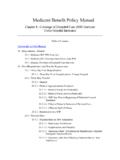Transcription of RBCDH DOI: http://dx.doi.org /10.5007/1980-0037 ...
1 DOI: original articleLicenceCreative Commom CCBYRBCDH1 Universidade Federal de Santa Catarina. Departamento de Nutri- o. Florian polis, SC. BrasilReceived: 05 August 2013 Accepted: 19 March 2014 Methods for estimating body weight and height in hospitalized adults: a comparative analysisM todos de estimativa de peso corporal e altura em adultos hospitalizados: uma an lise comparativaAna Paula Ferreira Melo1 Raquel Kuerten de Salles1 Francilene Gracieli Kunradi Vieira1 Marilyn Gon alves Ferreira1 Abstract The aim of this study was to compare the values obtained through methods directed to height and body weight estimates in relation to measurements taken from hospitalized adult.
2 Study participants were 142 adults of both genders. Anthropometric measurements of body weight, height, knee height, arm length, span, demi-span, recum-bent height, calf, arm and abdominal circumferences and subscapular skinfold thickness were taken. The actual measurements were compared with those obtained from formulas for estimating weight and height, using the paired t test. The estimated measurements dif-fered significantly (p < ) from the actual measurements in both genders, observing the tendency of overestimating these measurements. The exception was the estimated height for men by the formula that utilizes the variable knee height (p> ).
3 The aver-age estimated body weight closest to the actual body weight for men was obtained with the formula that used the measurements of arm, abdominal and calf circumferences. For women, the biggest coincidences were obtained by means of the formula that utilizes the variable knee height. For both men and women, the averages related to the body mass index, calculated through estimated body weight and height measurements resulted in the same nutritional diagnosis when compared to the body mass index involving actual measurements. The estimated height by the formula that utilizes the variable knee height among men was the only measurement which did not represent significant differences.
4 Other methodologies for estimating body weight and height presented significant differ-ences, which suggests that new studies using other methodologies are words: Anthropometry; Body composition; Body weights and measures; Estimation techniques. Resumo Comparar valores encontrados mediante m todos direcionados s estimativas de peso corporal e altura em rela o s medidas aferidas em adultos hospitalizados. Fizeram parte do estudo 142 adultos de ambos os sexos. Foram coletadas medidas antropom tricas de peso corporal, altura, altura de joelho, comprimento de bra o, envergadura de bra o, semienvergadura, altura recumbente, circunfer ncias de panturrilha, bra o e abdome e espessura de dobra cut nea subescapular.
5 As medidas realizadas foram comparadas com aquelas obtidas a partir de f rmulas de estimativa de peso e altura mediante teste t pareado. Em ambos os sexos, as medidas estimadas diferiram significativamente (p<0,001) das medidas reais, observando-se a tend ncia de superestimativa destas medidas. Exce o foi a altura estimada para homens pela f rmula que utiliza a altura de joelho (p>0,001). A m dia de peso corporal estimado mais pr xima do peso corporal medido para homens foi obtida com a f rmula que utilizou medidas de circunfer ncia de bra o, abdome e panturrilha.
6 Para as mulheres, as maiores coincid ncias foram obtidas mediante f rmula que utiliza altura de joelho. Tanto em homens quanto em mulheres, as m dias relacionadas ao ndice de massa corporal, calculado por interm dio de medidas estimadas de peso corporal e estatura, apon-taram id ntico diagn stico nutricional quando comparado com ndice de massa corporal envolvendo medidas reais. A altura estimada pela f rmula que utiliza a altura de joelho entre os homens foi a nica medida que n o apresentou diferen a significativa. As demais metodologias de estimativa de peso corporal e altura apresentaram diferen as significativas, demonstrando que novos estudos com outras metodologias s o necess : Antropometria; Composi o corporal; Pesos e medidas corporais; T cnicas de estimativa.
7 476 Body weight and height in adults Melo et Nutritional assessment is a useful tool to support the therapeutic proposal and monitor the effectiveness of nutritional interventions, especially in hospitalized individuals1. Among the nutritional assessment methods, anthropometric measurements stand out, in which body weight and height are the most widely used. Both measures are essential for establishing the nutritional diagnosis and dietary and pharmacological prescriptions2. Subject who are bedridden and unable to walk require equipment and technological solutions to meet the need for weighing in bed.
8 Scales integrated to hospital beds are examples, however, they have high costs and are not reality in hospitals3. Thus, many researchers have sought to develop methods to estimate body weight and height from specific measures of body segments that can be measured in these patients such as knee height, arm and calf circum-ferences, skinfold thickness, among others4 -10. Considering the importance of measures such as body weight and height as essential indicators in the assessment of the nutritional status and the impossibility to take these measures in bedridden subjects, this study aimed to compare values found by methods aimed to estimate body weight and height most frequently used in clinical practice with measurements taken in hospitalized adults.
9 METHODS This is an analytical, quantitative cross-sectional study conducted in a pub-lic hospital in southern Brazil from July 2011 to August 2012. The sample was obtained by convenience and selected according to the following crite-ria: adults aged 20-60 years of both sexes, able to walk and hospitalized in medical and surgical clinics in the aforementioned hospital. Subjects with peripheral edema, ascites or anasarca, with limb amputation or paralysis or on dialysis were excluded. The project was approved by the Ethics Committee on Human Research of the Federal University of Santa Catarina, Protocol 1107.
10 All study par-ticipants signed the informed consent form. Anthropometric measurements were selected according to variables contained in the formulas for estimating body weight and height selected in this study (Box 1). The final data collection was preceded by training of the researchers involved, seeking to standardize procedures and mea-surement techniques. Measurements were taken in the morning after a fasting period of 10 hours and after urination. Anthropometric measurements taken were height, body weight, semi-span (SS) , span (S), recumbent height (RH), knee height (KH), arm length (AL), arm circumference (AC), calf circum-ference (CC), abdominal circumference (AC) and subscapular skinfold thickness (SEsf ).















